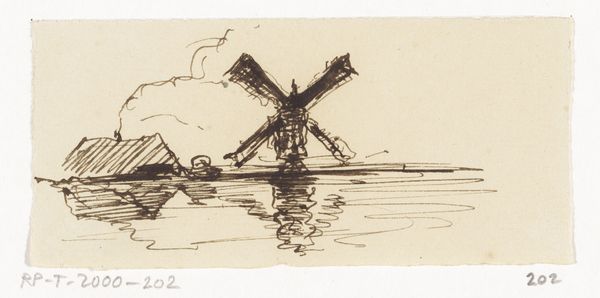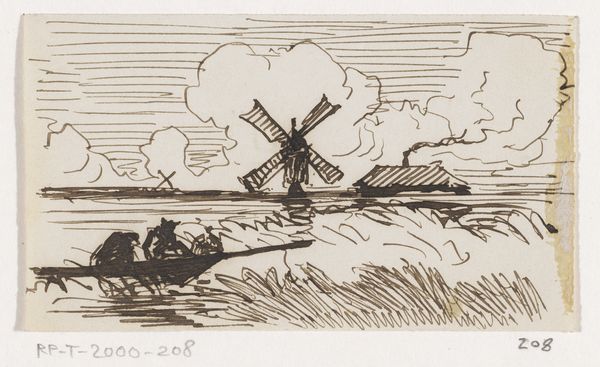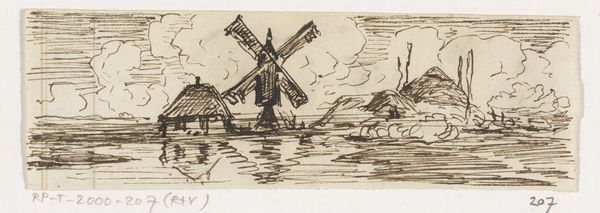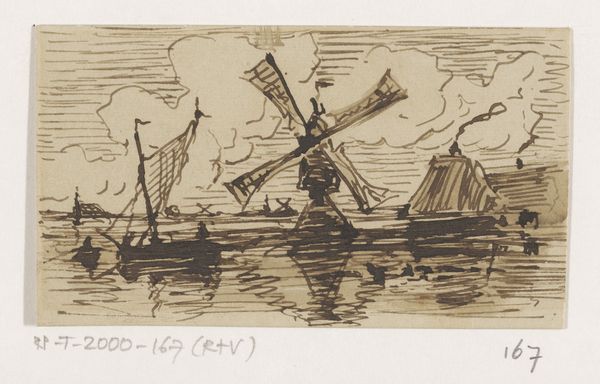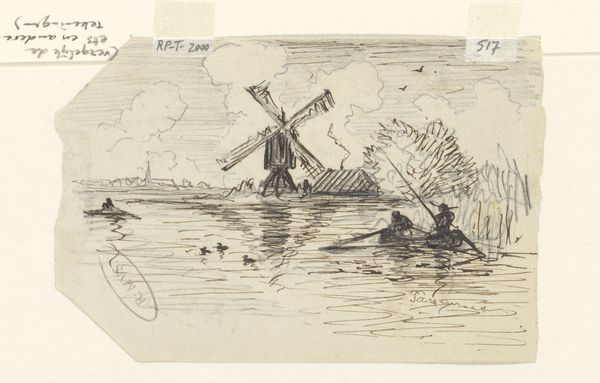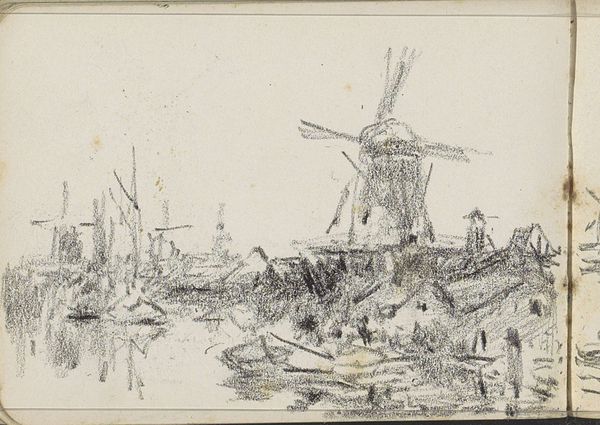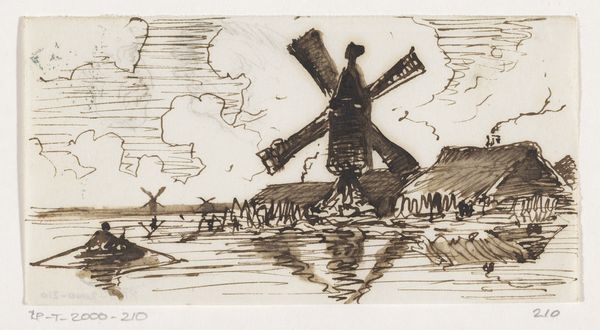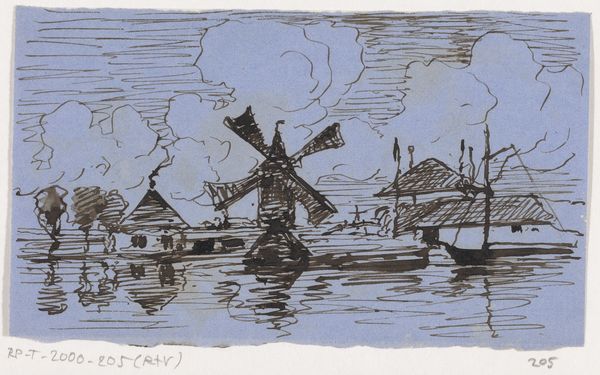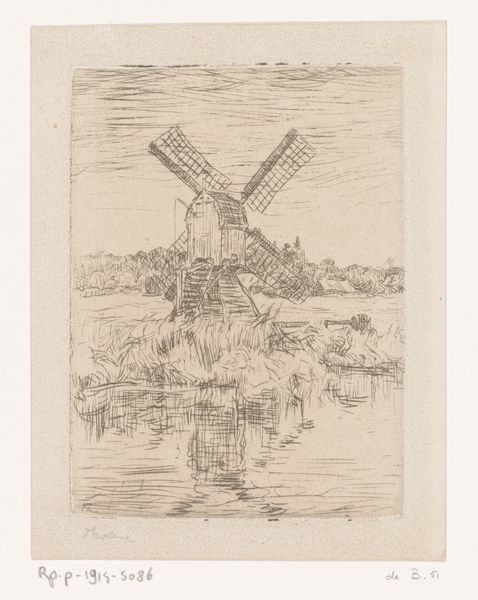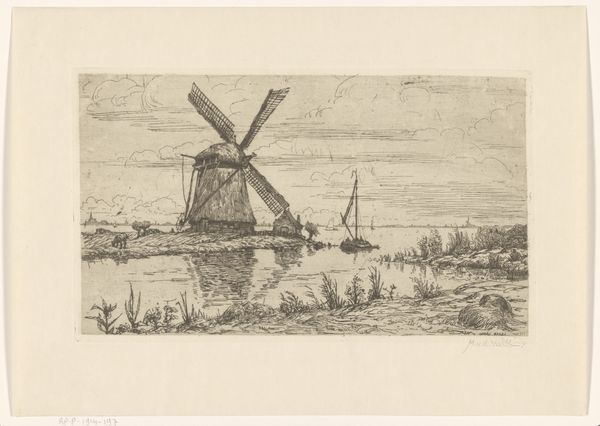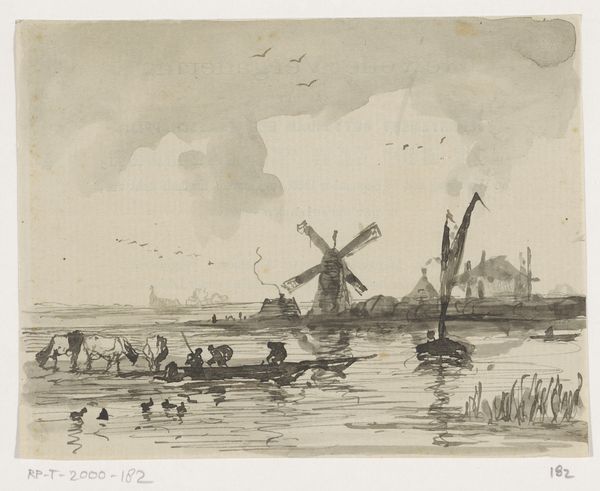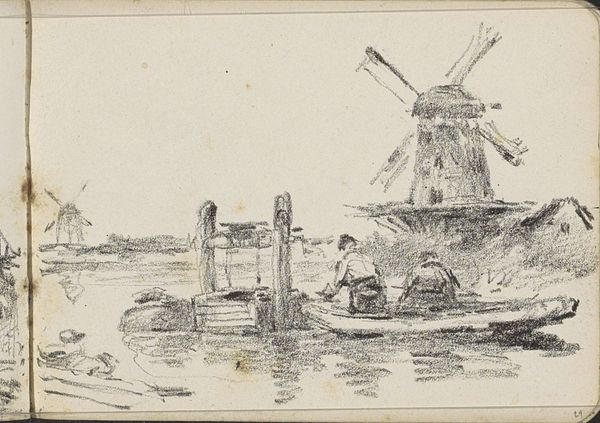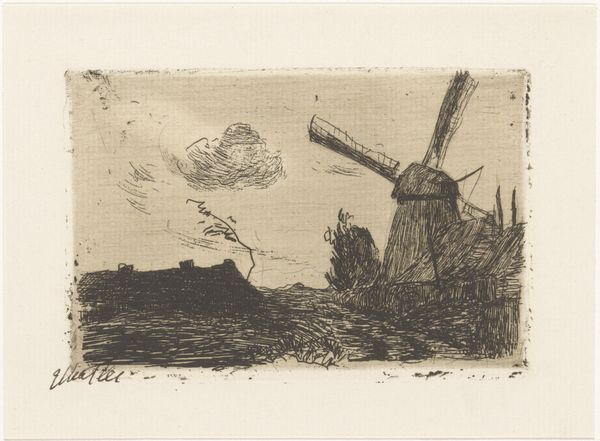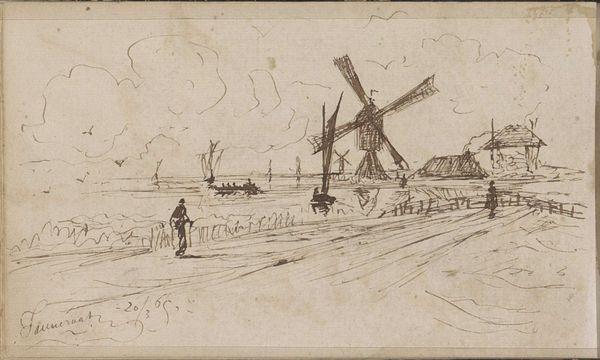
Dimensions: height 73 mm, width 112 mm
Copyright: Rijks Museum: Open Domain
Editor: This ink drawing, “Rivierlandschap,” from somewhere between 1840 and 1880 by Johannes Tavenraat, has a wonderful sense of light, despite the limited palette. What do you see in this piece? Curator: I see a potent reminder of the Netherlands' historical and ongoing relationship with its landscape, a relationship deeply entwined with issues of control, labor, and identity. Those windmills aren't just picturesque; they are symbols of power, specifically, human power over nature. How did the industrial revolution affect the representation of windmills in art at the time? Editor: That's interesting; I hadn't considered the industrial context. Maybe there’s also an element of nostalgia present even then, perhaps romanticizing a pre-industrial era even as it was fading? Curator: Precisely! The Romanticism movement often idealizes the past as a response to industrial change. But, let’s think critically about whose past is being idealized. Who benefitted from this landscape, and who was working on it? Were the laboring classes included in this romanticized vision? Or were they intentionally excluded? What statements were these images implicitly making? Editor: It’s definitely a privileged viewpoint, thinking about it now. Curator: Also, consider how Dutch identity itself became linked to the land, this constant battle against the water. Do you see that struggle reflected in this drawing? And how does it intersect with the later rise of nationalism in Europe? Editor: The composition feels a little unsteady, like the land is fighting back against the water? I see what you mean. This connects to a broader understanding of landscape art as tied to cultural narratives. Curator: Exactly! Art becomes a site where national identity, class divisions, and power dynamics are not just represented but actively negotiated and contested. What can be revealed by encouraging that tension? Editor: I never thought about a simple landscape carrying so much weight. Curator: Thinking about it that way encourages me to rethink any preconceived notions that I hold when visiting artwork.
Comments
No comments
Be the first to comment and join the conversation on the ultimate creative platform.
